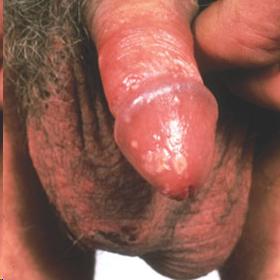
Principal Viral STIs: <br />Genital Herpes
28

Most infected people have no or minimal signs or symptoms from HSV-1 and HSV-2 infection. When signs appear, they typically occur within 2 weeks after the virus is transmitted and appear as one or more blisters on or around the genitals or rectum. After a first episode of genital herpes, about four to five more outbreaks can occur within a year. Subsequent outbreaks are less severe than the first one and the number of outbreaks decreases with time even though the infection can stay in the body indefinitely.
It is diagnosed usually by visual inspection and samples from sores. It can also be diagnosed with a blood test looking for antibodies. There is no cure for herpes. Treatment includes antiviral medications and oral daily suppressive medications. Antiviral medications relieve pain, shorten the duration of sores, prevent bacterial infections at open sores, and prevent outbreaks while on the medication. HSV often responds better to oral daily suppressive therapy than topical medications. Other treatment includes rest, a balanced diet, avoiding tight clothes, keeping genital areas cool and dry, taking aspirin or other pain killers, and reducing stress.
Image: McGraw Hill